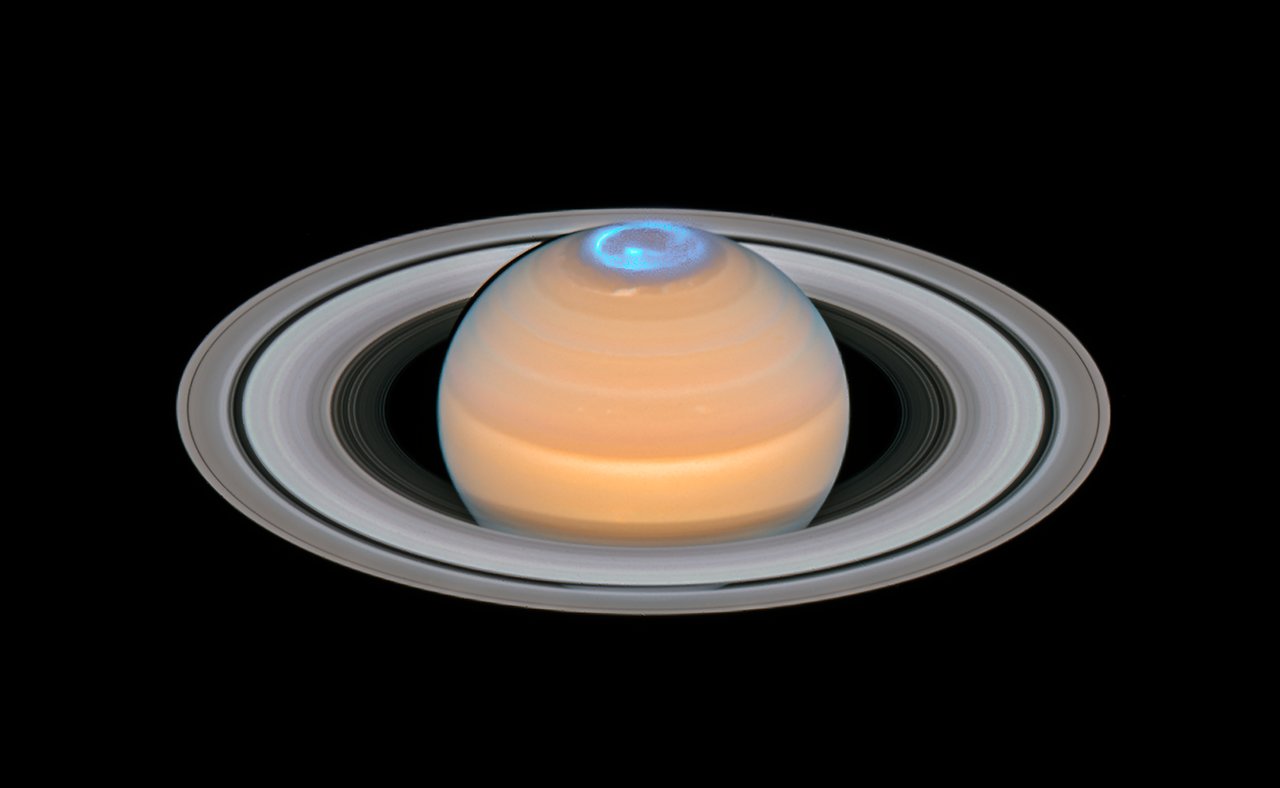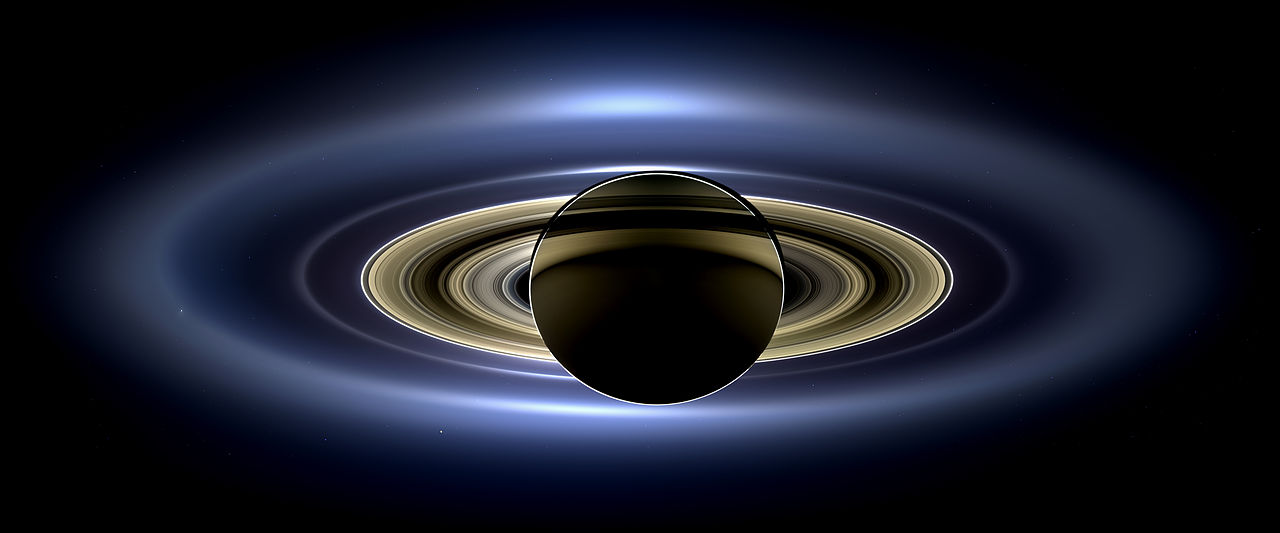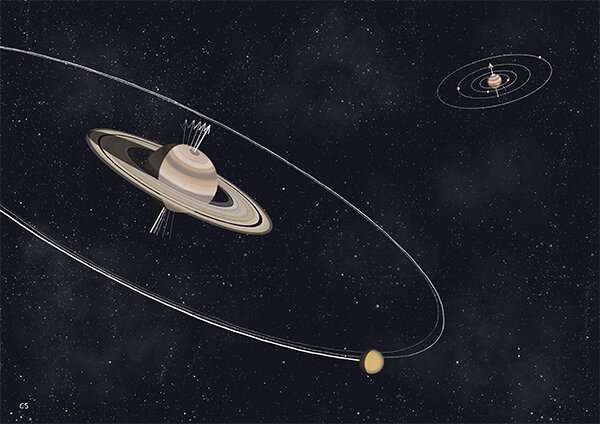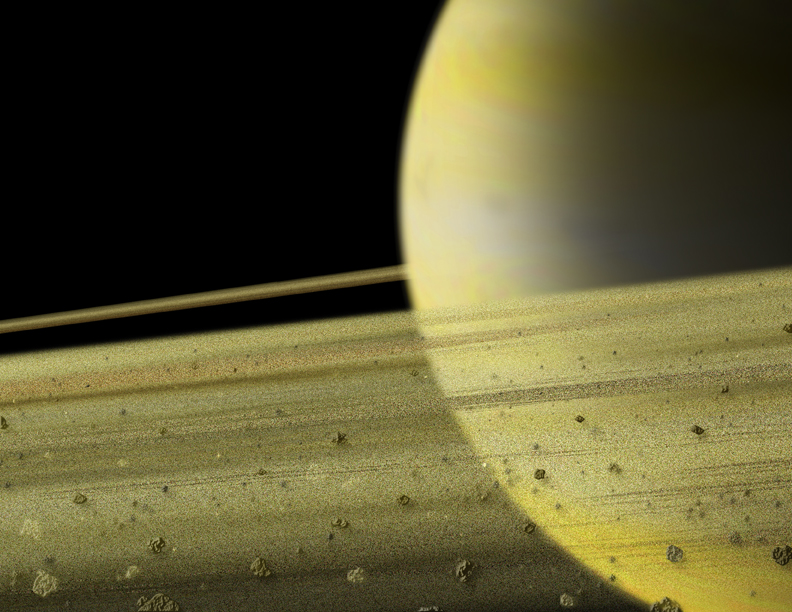I can remember it very well, although not actually sure when it was, back around 1995/1996 I think. I was, like most other keen stargazers very familiar with the sight of Saturn with rings and all. Indeed the view of Saturn with its rings was one of the first things I had ever seen through a telescope and it inspired me into a lifetime passion of exploring the night sky. Every 15 years though, the Earth passes through the plane of the rings and from Earth they seem to vanish. Now, an astronomer has used data taken during such ring plane crossings from the Cassini spacecraft to measure the transparency of the rings.
Continue reading “In the Shadow of Saturn’s Rings”Colliding Moons Might Have Created Saturn’s Rings
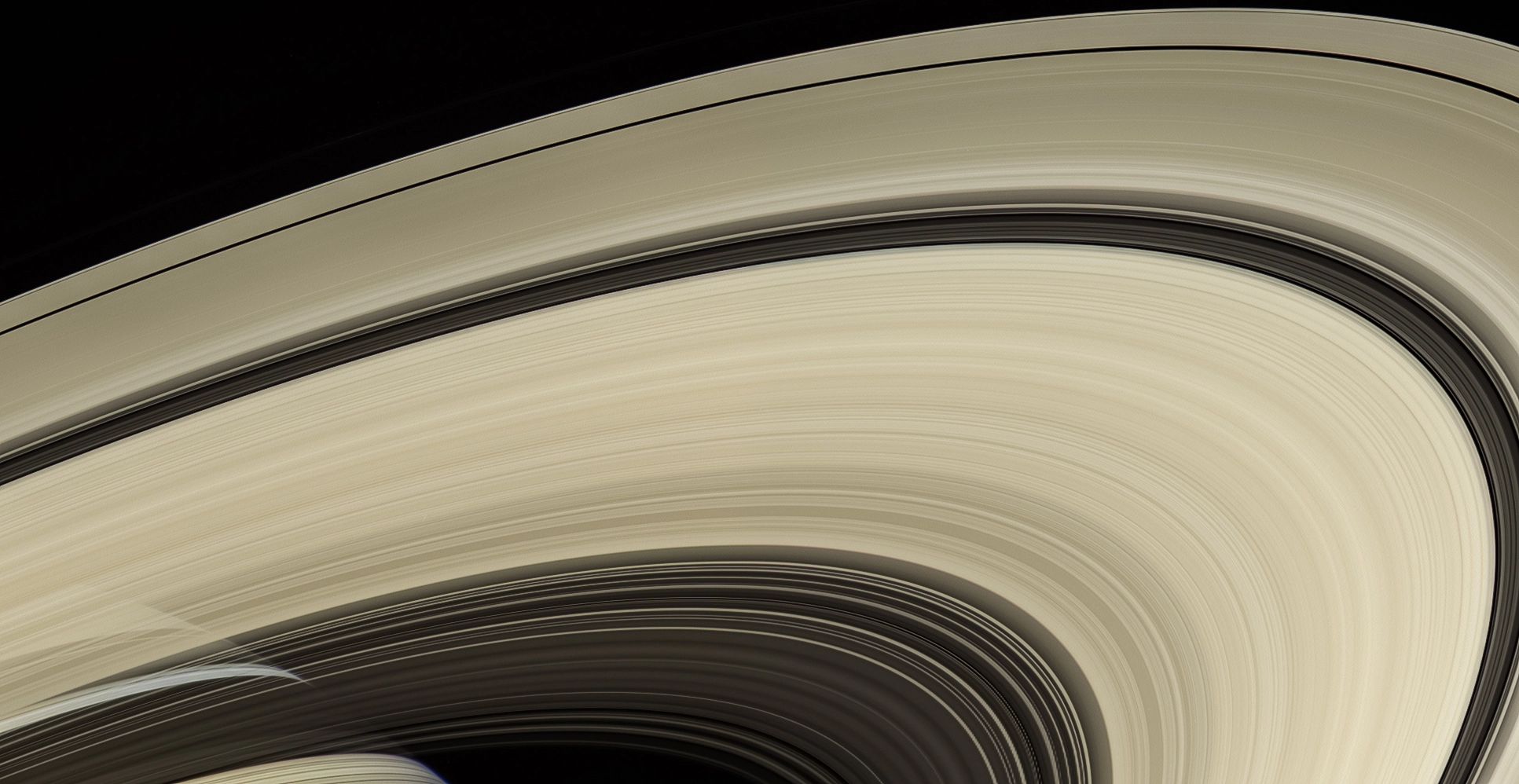
If we could wind the clock back billions of years, we’d see our Solar System the way it used to be. Planetesimals and other rocky bodies were constantly colliding with each other, and new objects would coalesce out of the debris. Asteroids rained down on the planets and their moons. The gas giants were migrating and contributing to the chaos by destroying gravitational relationships and creating new ones. Even moons and moonlets would’ve been part of the cascade of collisions and impacts.
When nature crams enough objects into a small enough space, it breeds collisions. A new study says that’s what happened at Saturn and created the planet’s dramatic rings.
Continue reading “Colliding Moons Might Have Created Saturn’s Rings”Saturn's Rings are Much Younger Than the Planet
The rings of Saturn are an amazing sight. They are so iconic that it is hard to imagine Saturn without its rings. But throughout most of Saturn’s history, it didn’t have rings. The rings are much younger than the planet itself, and we now have good evidence to prove it.
Continue reading “Saturn's Rings are Much Younger Than the Planet”Saturn’s Rings Warm Up its Atmosphere
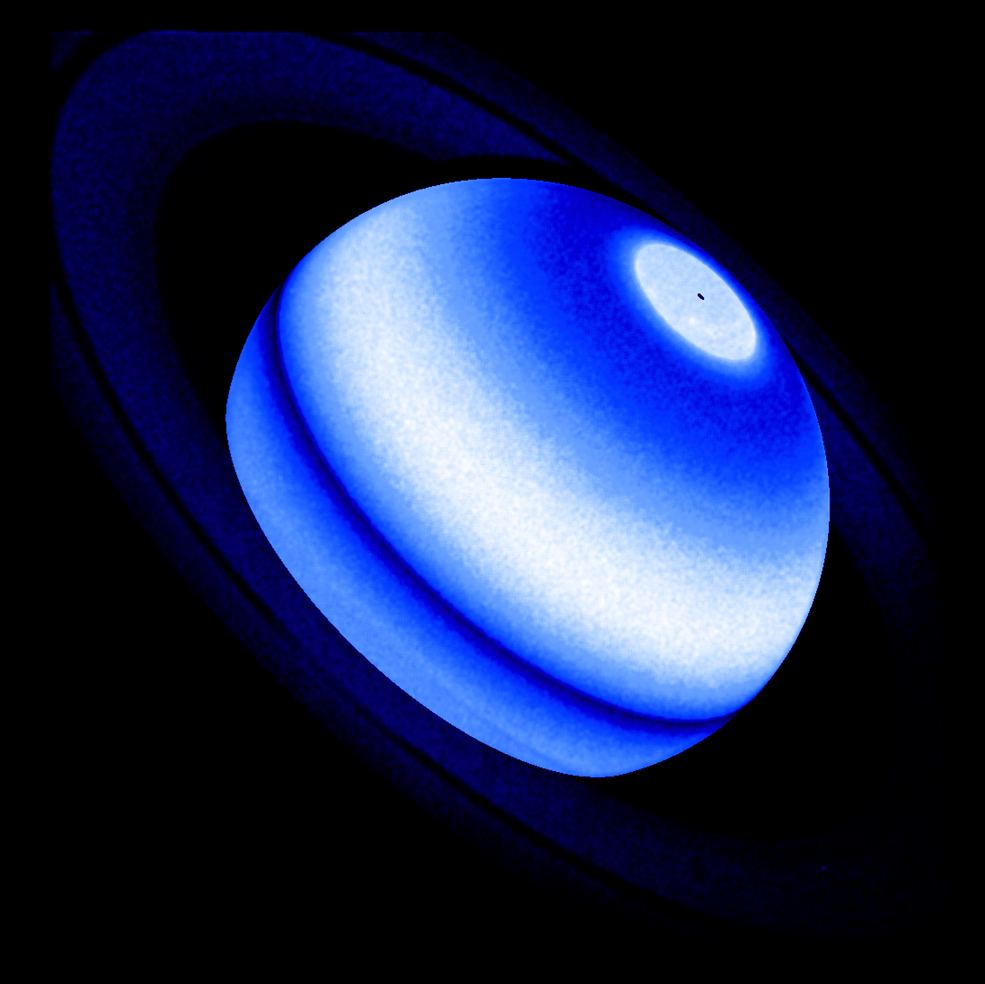
Saturn’s rings are one of the most well-known features throughout astronomy. While much is known about them, they still make headlines from time to time. This includes a recent study involving an international team of researchers that could help paint a clearer picture of the interaction between the gas giant and the massive ring system that encircles it.
Continue reading “Saturn’s Rings Warm Up its Atmosphere”Using Saturn’s Rings to Figure out What’s Inside the Planet
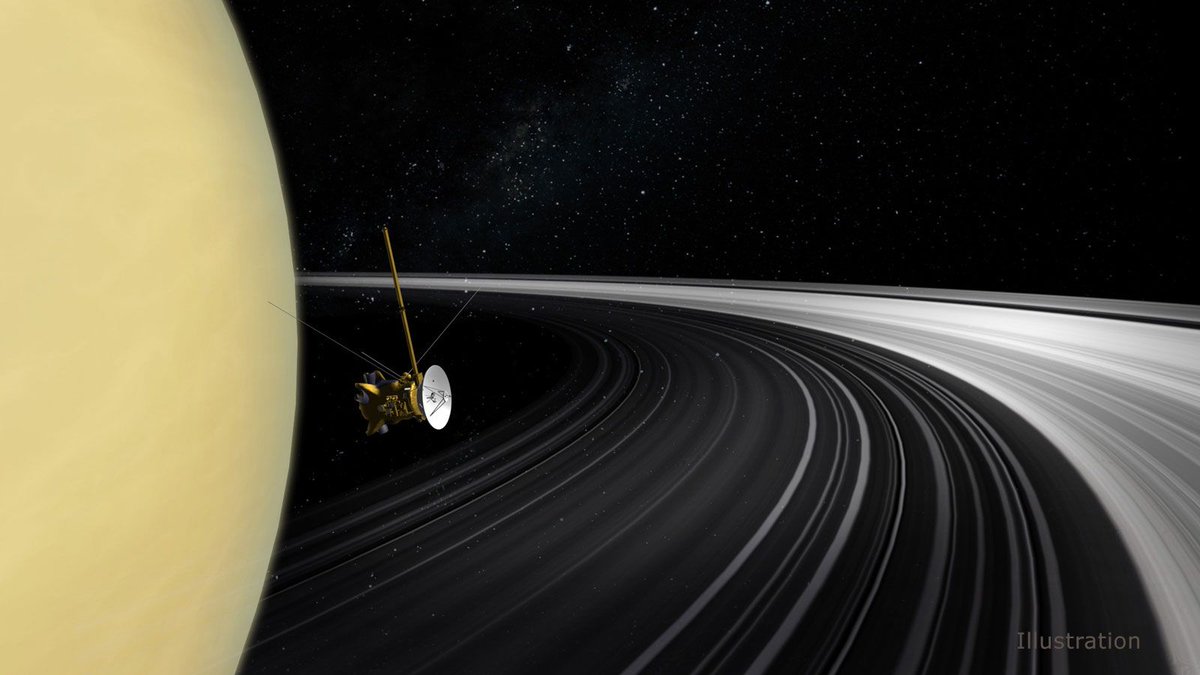
It’s tough to see inside of Saturn, because the atmosphere is opaque to all wavelengths of radiation. We have to rely on computer simulations and physics-based guesswork to try to understand the interior of that giant world. But researchers are becoming more adept at a different technique: looking for the slightest motions in the rings of Saturn.
Continue reading “Using Saturn’s Rings to Figure out What’s Inside the Planet”Saturn Got Its Tilt From Its Moons
One of the fundamental tenets of physics is that two objects, now matter how different their size, exert a force on each other. In most cases the size makes a big difference, with the larger objects enacting a much greater force on the smaller one.
However, over long periods of time, even much smaller objects can have an effect on the larger object in the pair. Recently a team of researchers from CNRS, the Sorbonne, and the University of Pisa have found an example of the smaller object, or in this case group of objects, having an outsized impact on the larger one. They have discovered that Saturn’s moons actually caused its famous tilt.
Continue reading “Saturn Got Its Tilt From Its Moons”Saturn’s Hexagon Will be the Star of the Cassini Finale
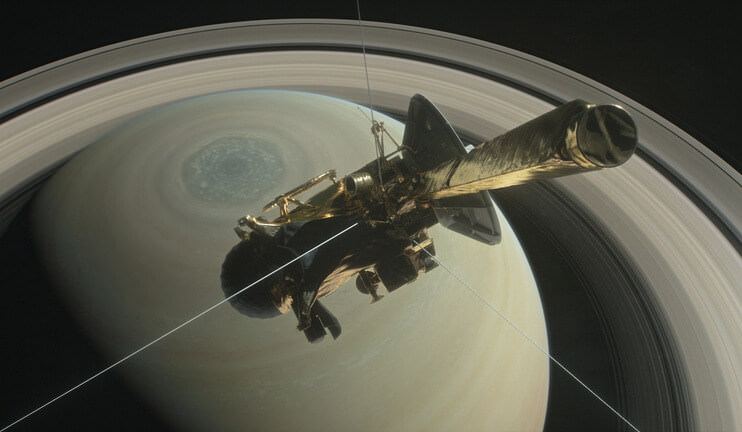
The Cassini spacecraft is nearing the end of its lifespan. This September, after spending the past twenty years in space – twelve and a half of which were dedicated to studying Saturn and its system of moons – the probe will be crash into Saturn’s atmosphere. But between now and then, the probe will be making its “Grand Finale” – the final phase of its mission where it will dive between the planet and its rings 22 times.
In addition to exploring this region of Saturn (something no other mission has done), the probe will also be using this opportunity to study Saturn’s hexagonal polar jet stream in greater detail. This persistent storm, which rages around Saturn’s northern polar region, has been a subject of interest for decades. And now that it enjoys full sunlight, Cassini will be able to directly image it with every pass it makes over Saturn’s north pole.
This persistent storm was first noticed in images sent back by the Voyager 1 and 2 missions, which flew by Saturn in 1980 and 1981, respectively. As storms go, it is extremely massive, with each side measuring about 13,800 km (8,600 mi) in length – longer than the diameter of the Earth. It also rotates with a period of 10 hours 39 minutes and 24 seconds, which is assumed to be equal to the rotation of Saturn’s interior.
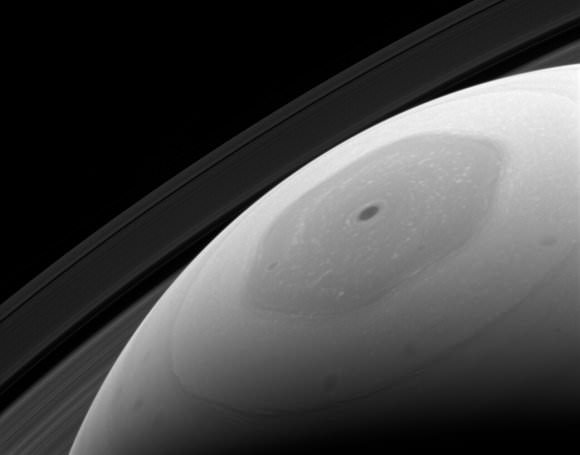
When the Cassini spacecraft arrived around Saturn in 2004 to conduct the first part of its mission, this region was in shadow. This was due to the fact that the northern hemisphere was still coming out of winter, and was hence tilted away from the Sun. However, since Saturn began its summer solstice in May of 2017, the northern polar region is now fully illuminated – at least by Saturn’s standards.
In truth, between its distance from the Sun (an average of 9.5549 AU) and its axial tilt (26.73°), the northern polar region only gets about 1% as much sunlight as Earth does. And from the perspective of the north pole, the Sun is very low in the sky. Nevertheless, the sunlight falling on the north pole at this point is enough to allow the Cassini mission to directly image the region by capturing its reflected light.
Images of the hexagonal jet stream (like the one above) will be taken by Cassini’s wide-angle camera, which uses special filters that admit wavelengths of near-infrared light. Already, Cassini has captured some impressive imagery during its first plunge between Saturn and its rings (which took place on April 26th, 2017). The rapid-fire images acquired by one of Cassini’s cameras were then stitched together to create a movie (posted below).
As you can see, the movie begins with a view of the vortex at the center of the hexagon, then heads past the outer boundary of the jet stream and continues further southward. Toward the end of the movie, the spacecraft reorients itself to direct its saucer-shaped antenna in the direction of the spacecraft’s motion, which is apparent from the way the camera frame rotates.
The images that make up this movie were captured as the Cassini spacecraft dropped in altitude from 72,400 to 6,700 km (45,000 to 4,200 miles) above Saturn’s cloud tops. As this happened, the features which the camera could resolve changed drastically – going from 8.7 km (5.4 mi) per pixel to 810 meters (0.5 mi) per pixel.
The movie was produced by Kunio Sayanagi and John Blalock – an associate of the Cassini imaging team and a graduate research assistant (respectively) at Hampton University in Virginia – who collaborated with the Cassini imaging team. And thanks to this video, new insights are already being made into the hexagonal jet stream and the mechanisms that power it.
For example, as Sayanagi indicated in a NASA press release, the video captured the boundary regions of the jet stream rather nicely, which allowed him to note an interesting fact about them. “I was surprised to see so many sharp edges along the hexagon’s outer boundary,” he said. “Something must be keeping different latitudes from mixing to maintain those edges.”
Andrew Ingersoll, a member of the Cassini imaging team based at Caltech, expressed how similar movies will result from future plunges taken as part of the Grand Finale. “The images from the first pass were great, but we were conservative with the camera settings,” he said. “We plan to make updates to our observations for a similar opportunity on June 29th that we think will result in even better views.”
Between now and the end of the mission, who knows what we might learn about this mysterious storm? The next plunge – aka. Grand Finale Dive No. 4 – will take place on Sunday, May 15th at 4:42 p.m. UTC (12:42 p.m EDT; 9:42 a.m. PDT). A total of 22 dives will be made on a weekly basis before the probe takes the final plunge – the one that will cause it to breakup in Saturn’s atmosphere – on Friday, September 15th, 2017.
For more information, consult Cassini’s Grand Finale Orbit Guide. And be sure to enjoy this video of the final phase of the probe’s mission, courtesy of NASA:
What are Saturn’s Rings Made Of?
Saturn is sometimes called the ”Jewel of the Solar System” because its ring system looks like a crown. The rings are well known, but often the question ”what are Saturn’s rings made of” arises. Those rings are made up of dust, rock, and ice accumulated from passing comets, meteorite impacts on Saturn’s moons, and the planet’s gravity pulling material from the moons. Some of the material in the ring system are as small as grains of sand, others are larger than tall buildings, while a few are up to a kilometer across. Deepening the mystery about the moons is the fact that each ring orbits at a different speed around the planet.
Saturn is not the only planet with a ring system. All of the gas giants have rings, in fact. Saturn’s rings stand out because they are the largest and most vivid. The rings have a thickness of up to one kilometer and they span up to 482,000 km from the center of the planet.
The rings are named in alphabetical order according to when they were discovered. That makes it a little confusing when listing them in order from the planet. Below is a list of the main rings and gaps between them along with distances from the center of the planet and their widths.
- The D ring is closest to the planet. It is at a distance of 66,970 – 74,490 km and has a width of 7,500 km.
- C ring is at a distance of 74,490 – 91,980 km and has a width of 17,500 km.
- Columbo Gap is at a distance of 77,800 km and has a width of 100 km.
- Maxwell Gap is at a distance of 87,500 km and has a width of 270 km.
- Bond Gap is at a distance of 88,690 – 88,720 km and has a width of 30 km.
- Dawes Gap is at a distance of 90,200 – 90,220 km and has a width 20 km.
- B ring is at a distance of 91,980 – 117,580 km with a width: 25,500 km.
- The Cassini Division sits at a distance of 117,500 – 122,050 km and has a width of 4,700 km.
- Huygens gap starts at 117,680 km and has a width of 285 km – 440 km.
- The Herschel Gap is at a distance of 118,183 – 118,285 km with a width of 102 km.
- Russell Gap is at a distance of 118,597 – 118,630 km and has a width of 33 km.
- Jeffreys Gap sits at a distance of 118,931 – 118,969 km with a width of 38 km.
- Kuiper Gap ranges from 119,403 -119,406 km giving it a width of 3 km.
- Leplace Gap is at a distance of 119,848 – 120,086 km and a width of 238 km.
- Bessel Gap is at 120,305 – 120,318 km with a width of 10 km.
- Barnard Gap is at a distance of 120,305 – 120,318 km giving it a width of 3 km.
- A ring is at a distance of 122,050 – 136,770 km with a width of 14,600 km.
- Encke Gap sits between 133,570-133,895 km for a width of 325 km.
- Keeler Gap is at a distance of 136,530-136,565 km with a width of 35 km.
- The Roche Division is at 136,770 – 139,380 km for a width 2600 km.
- F ring is begins at 140,224 km, but debate remains as to whether it is 30 or 500 km in width.
- G ring is between 166,000 – 174,000 km and has a width of 8,000 km.
- Finally, we get to the E ring. It is between 180,000 – 480,000 km giving it a width of 300,000 km.
As you can see, a great deal of observation has been dedicated to understanding and defining Saturn’s rings. Hopefully, having the answer to ”what are Saturn’s rings made of” will inspire you to look more deeply into the topic.
We have written many articles about Saturn for Universe Today. Here’s an article about the orbit of Saturn, and here’s an article about the temperature of Saturn.
If you’d like more info on Saturn, check out Hubblesite’s News Releases about Saturn. And here’s a link to the homepage of NASA’s Cassini spacecraft, which is orbiting Saturn.
We have recorded two episodes of Astronomy Cast just about Saturn. The first is Episode 59: Saturn, and the second is Episode 61: Saturn’s Moons.
Source: NASA

